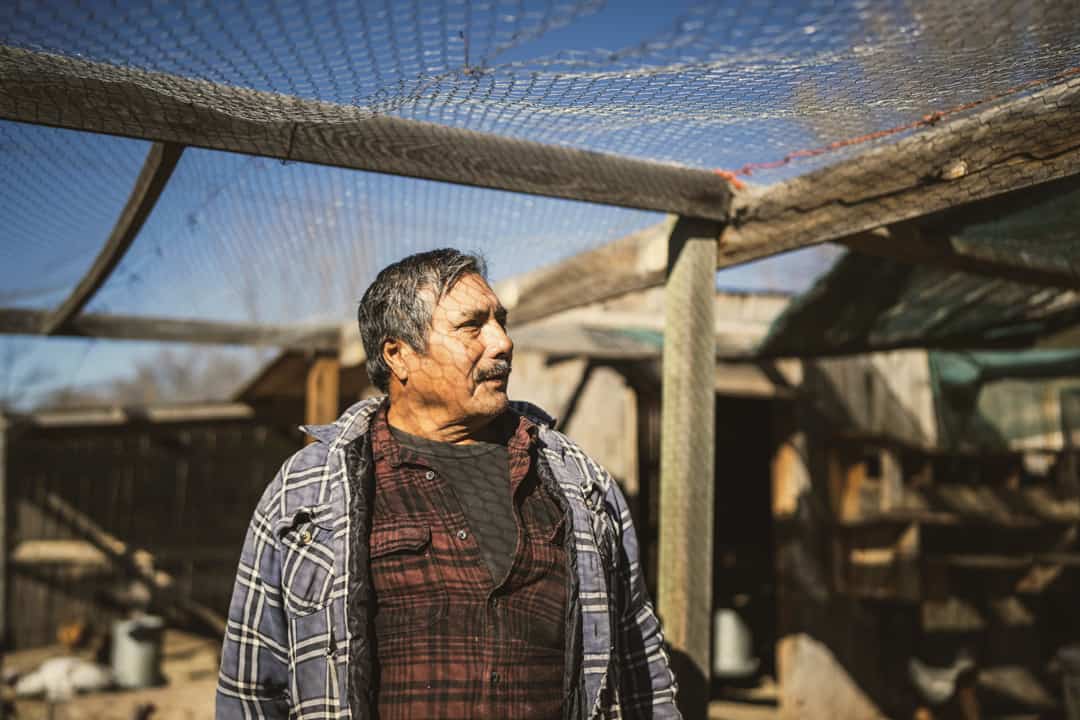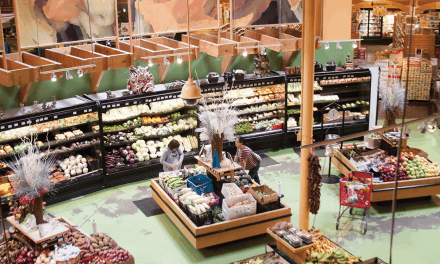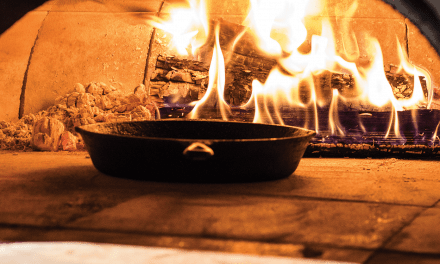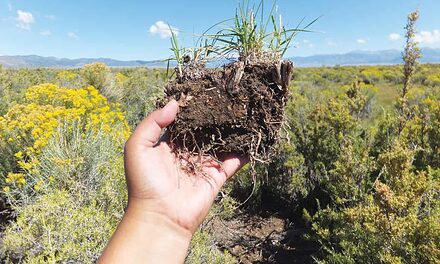An Interview with Derek Rugsaken, David Bancroft,
and Gaibi Vollbracht of Alto dinner series
Photos by Stephanie Cameron

The Alto dinner series is a culinary collaboration between Southeast by Southwest events and CBDJay LLC. Earlier this year, Alto hosted a dinner featuring hemp and hemp products. For this installment of Cooking Fresh, we interview the owners of Alto on the benefits of cooking with hemp, and they share some of their favorite recipes featuring the often misunderstood plant.*
Derek Rugsaken is a part-time private chef and cofounder and pop-up chef for Southeast by Southwest events, which serve family-recipe Thai food with New Mexico influences. He is also co-creator of the Alto dinner series. Rugsaken learned everything he knows about food from his father and father’s family, who brought Thai food to east central Indiana in the 1990s, and from the good-hearted people of northern New Mexico, who willingly share their home cooking secrets. When not cooking, he is probably in the mountains with his radiant wife/co-conspirator and three beloved children or providing mental and behavioral health services to youth and families in the Española Valley.
David “DJ” Bancroft is the founder/owner of CBDJay LLC and co-founder of the Alto dinner series. At eighteen, Bancroft moved to Amsterdam, where he worked in kitchens and coffee shops, and quickly developed a love for both cuisine and cannabis. He has worked in the medical cannabis industry in cultivation, extraction, production, and consulting for the past fifteen years. After Bancroft became a father of two boys, he realized the potential of CBD and hemp, and decided to develop a hemp production company.
Gaibi Vollbracht is the cofounder and manager of Southeast by Southwest. She and Rugsaken live in Dixon with their three kids. Vollbracht is a doula, yoga teacher, and artist. She uses her skills as an artist and organizer to transform Rugsaken’s wild creativity in the kitchen into intimate, beautiful events. She also runs her own two businesses: Mama’s Hands Birth Services and Yoga; and Wayward Flower Studio, where she specializes in pyrography and paint.
What is the difference between eating hemp and marijuana? Does hemp contain THC and/or CBD?
The legal distinction between the two is that marijuana has amounts of THC exceeding 0.3 percent.
Hemp is 0.3 percent THC or less and its flowers and leaves can contain upwards of ten percent of other medicinal phytocannabinoids, including CBD, CBG, CBN, and CBC, along with hundreds of other compounds that have not been fully identified yet. The dominant trend with recreational marijuana is, of course, emphasizing the high or psychoactive effect, while hemp is prepared and consumed for its variety of health benefits—mental, physical, and ecological.
What parts of the hemp plant do you cook with? Can you describe the flavor?
Several parts of the plant are edible, but the most commonly available at present are the hemp seeds (hearts) and oil. Hemp has a wide range of flavor potential, from rich, fatty, and nutty to piney and herbaceous to fruity. The juiced leaves are almost wheat-grassy and have a distinct flavor, while the young seedlings are sweet and floral. The flowers are somewhat overpowering to taste, but deeply aromatic due to the terpenes, or aromatic compounds in the plant, which also influence the flavor and effects of edible hemp. For example, d-limonene in hemp is almost identical to the compound found in limes and is associated with uplifting, energizing effects; linalool (also found in lavender) is known for its calming effect; and myrcene (found in mangoes) is noted for its heavy sedative effects. These terpenes can be extracted from hemp and have pretty exciting culinary possibilities.
What are the culinary or medicinal benefits of cooking with hemp?
Hemp has a wide variety of health benefits, ranging from basic nutrition to supporting and regenerating multiple systems in the body. Hemp seed is high in protein, fiber, omega-3s, and vitamins. It is a rare complete protein, providing all nine amino acids essential for our survival. Studies have even suggested that CBD oil might contribute to neural regeneration for individuals suffering from Alzheimers and Parkinson’s.
What made you interested in cooking with hemp?
Hemp (and marijuana) have been used in Chinese and Indian medicine for more than five thousand years, and there is a huge precedent for cooking with it in human history. We entered into it initially while involved in a project trying to start a CBD company, and were presented with the task of developing edible gummies. To do this in a health-forward and regenerative way, a series of conversations arose around hemp and food as medicine in the kitchen.
Rugsaken: At the time I was just starting my pop-up dinners, and DJ came on for the first event as my sous chef. We realized immediately that we have a special synergy in the kitchen, and after cooking together for a year of pop-ups, we started to question how to incorporate the hemp plant.
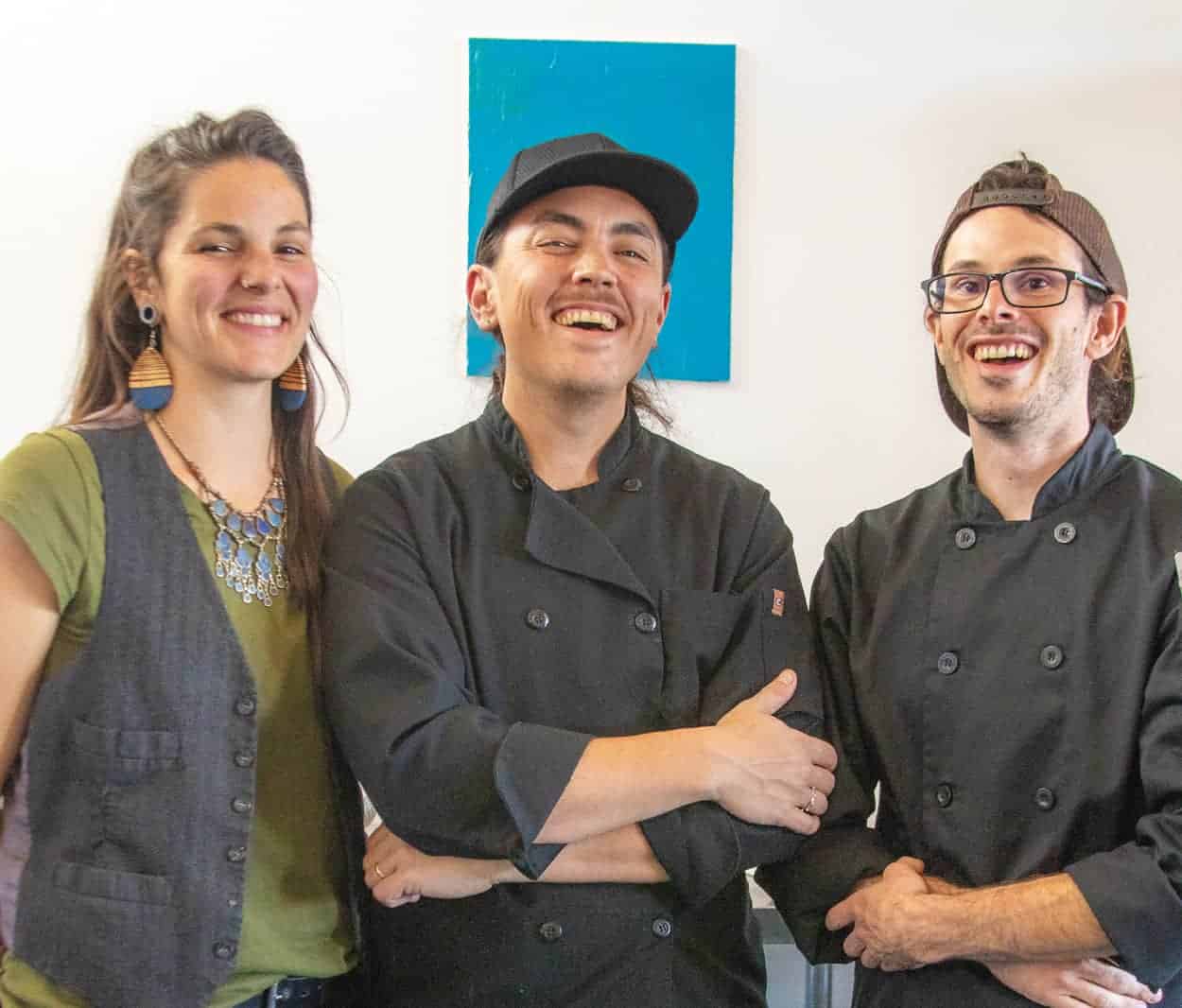
Gaibi Vollbracht, Derek Rugsaken, and David Bancroft.
Bancroft: It all started when I pitched the idea of the all-hemp salad. From working in the CBD company, we had access to extraction equipment that allowed us to play around with flavor in a whole new way. Our first experiment was extracting pure pine oil from piñon resin collected from all around my house. The smell was deep and immediately took us back to childhood memories of playing in the woods. Although it was not suitable for consumption, it was perfect as an ingredient for an arnica salve. Knowing that hops are cousins of hemp, we tried heat and pressure extraction of a freshly dried hop. We are excited to introduce this calming hop rosin into a dish at an upcoming event!
How did you go about developing recipes? What are some favorites?
Rugsaken: We are two sides of a brain when it comes to recipe development. It often starts with a text or a DM. Outside of an emphasis on hemp and its culinary potential, the other side of our mission with these dinners is to locally source/wild harvest ingredients that are not currently seen as edible and incorporate them in ways that are not currently considered. Extraction of piñon sap opened a Pandora’s box of applications of local smells and textures that could be applied to food to spark intrigue and nostalgia.
Bancroft: My favorite dish was the dessert we served at our Alto dinners. We combined Derek’s handmade coconut ice cream and infused it with palo santo smoke. To that, I added a pressed hemp flower dipped in chocolate from raw cocoa mixed with reishi, maca, cordyceps, and agarikon, covered on one side with 24k gold leaf, sitting in a bath of terpene floral fog.
Rugsaken: I think the dish that best showcases what I love about edible hemp is the avocado toast. The avocado and hemp play together so well.
Tell us a bit about the pop-up dinner you did featuring hemp. What was the reception from diners? Will you be hosting more?
Vollbracht: Derek and DJ inspire each other to explore new combinations of flavors and textures by blending their unique skill sets and passions, and the result is Alto. Not only do the dishes feature elements such as long-fermented sourdough and homegrown hemp starts, but at our first Alto dinner, the courses followed a storyline. The hemp grew up at our dinner: in one dish the hemp was sprouted seeds, then a small hemp start with its tiny roots, and later a mature leaf covered the plate below lavender parsnips and edible flowers. We served a spring course and a winter course following the shifting of the seasons throughout the year. The dishes are inspired by the local seasonal vegetables, which we gather from our markets to grow an unforgettable evening of flavors.
Rugsaken: We grilled fresh river trout in corn husks with rosemary butter and perfumed it with lemon and full-spectrum hemp oil just before serving. Our intention to bring wellness and joy to our guests seemed to bear fruit in the lightness of the atmosphere and the energy of the conversations.
Bancroft: For our second event, we had the honor of doing a pop-up at our friends’ Leaf and Hive Brew Lab in Santa Fe and pairing our dishes with their amazing honey brews for another small crowd of brilliant individuals. In this dinner, we emphasized the flavors of the New Mexico spring season across eleven plant-based courses. These dinners are a joy for us to throw and we look forward to many, many more.
Where do you source your hemp? How should home cooks go about sourcing hemp products for their own recipes? How can the home cook determine which of those sources are the highest quality?
Bancroft: Hemp is regulated as of July 2019 by the New Mexico Environment Department, and we suggest supporting those who have qualifying hemp manufacturing licenses. As with produce, seek a relationship with a local farmer. Consumers can source other products from qualified, licensed hemp growers using methods designed to ensure the highest qualities of hemp for edible and medicinal purposes while maintaining ecological sustainability.
Rugsaken: I feel very lucky to have DJ, who has cultivated relationships with hemp growers across New Mexico, and is now committed to producing his own premium-quality hemp products. [Products] that I know I can trust. Just like with my food-growers, knowing the respect and the loving care that he puts into his plants and products is everything to me.
Bancroft: Current regulations make hemp growing cost-prohibitive for personal use. For those with a medical cannabis card, the ideal would be to grow your own hemp plants for culinary purposes. We’ve been told that regulations are in the works to allow the sale of leaves and other parts of the plant for culinary purposes, such as at the farmers markets. If readers are interested in how they can participate in hemp advocacy and push the possibility of hemp, they can contact us for more information at cbdjay.com.
Where do you see culinary hemp headed?
Rugsaken: Once chefs see the potential and regulation evolves, I think we will see an explosion in hemp cuisine and the recognition of hemp as a food.
Bancroft: At this moment, it seems like regulation is still trying to catch up with the complexity of producing and selling hemp-based products, but I have faith that it will, and when it does it’s going to be huge!
Do you have any future pop-ups planned that will feature hemp?
Rugsaken: Yes we do! If you are interested, sign up for our mailing list via altodinner@gmail.com and get sneak peeks of recipes we are working on for an upcoming cookbook.
Bancroft: I’m happy to announce that I’ve just submitted the application for a hemp manufacturer’s license and expect to be ready by late November. We look forward to sharing the culinary magic of hemp with our New Mexico community.
Edible celebrates New Mexico's food culture, season by season. We believe that knowing where our food comes from is a powerful thing. With our high-quality, aesthetically pleasing and informative publication, we inspire readers to support and celebrate the growers, producers, chefs, beverage and food artisans, and other food professionals in our community.






